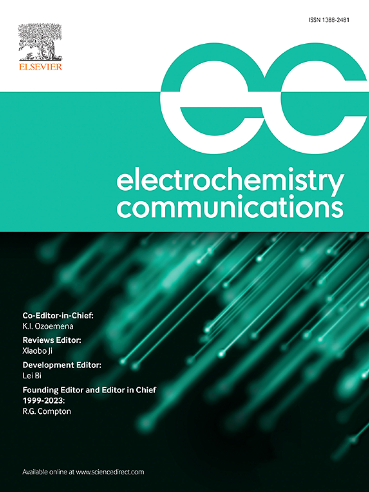Two-dimensional W2C cathodes for fluoride-ion batteries: Achieving fast ion transport via vacancy induction
IF 4.2
3区 工程技术
Q2 ELECTROCHEMISTRY
引用次数: 0
Abstract
The two-dimensional W2C sparked widespread interest due to high physicochemical stability and large specific surface area. Fluoride-ion batteries (FIBs) are promising candidates in energy storage applications due to excellent properties such as high energy density. Despite such potential, the role of these materials in FIBs needs elucidation, especially regarding the effect of the fluoride ion transport mechanism on the material surface. In this study, the suitability of W2C as a cathode material for FIB was evaluated for the first time using the vacancy induction method based on first-principles calculations. The results show that the diffusion barrier for fluoride ions on the W2C surface is drastically reduced from 0.26 eV to 0.11 eV, and the ion transport efficiency is more than doubled, while a high theoretical voltage of 4.32 V and stable cycling at a concentration of 0–175 % F− are achieved. This is attributed to the fact that vacancy defects reduce the binding affinity of tungsten to fluoride ions and promote desorption of fluoride ions. This study highlights the importance of vacancy-induced techniques in enhancing 2D materials' ion transport capacity, providing valuable insights for advancing high-performance FIB designs.
氟离子电池的二维W2C阴极:通过空位感应实现快速离子传输
二维W2C由于其高的物理化学稳定性和大的比表面积而引起了广泛的兴趣。氟离子电池由于具有高能量密度等优异性能,在储能领域具有广阔的应用前景。尽管有这样的潜力,这些材料在fib中的作用需要阐明,特别是关于氟离子在材料表面传输机制的影响。本研究首次采用基于第一性原理计算的空位感应法对W2C作为FIB正极材料的适用性进行了评价。结果表明,氟离子在W2C表面的扩散势垒从0.26 eV大幅降低到0.11 eV,离子输运效率提高了一倍以上,同时实现了4.32 V的高理论电压和0 ~ 175% F−浓度下的稳定循环。这是由于空位缺陷降低了钨对氟离子的结合亲和力,促进了氟离子的解吸。该研究强调了空位诱导技术在增强二维材料离子传输能力方面的重要性,为推进高性能FIB设计提供了有价值的见解。
本文章由计算机程序翻译,如有差异,请以英文原文为准。
求助全文
约1分钟内获得全文
求助全文
来源期刊

Electrochemistry Communications
工程技术-电化学
CiteScore
8.50
自引率
3.70%
发文量
160
审稿时长
1.2 months
期刊介绍:
Electrochemistry Communications is an open access journal providing fast dissemination of short communications, full communications and mini reviews covering the whole field of electrochemistry which merit urgent publication. Short communications are limited to a maximum of 20,000 characters (including spaces) while full communications and mini reviews are limited to 25,000 characters (including spaces). Supplementary information is permitted for full communications and mini reviews but not for short communications. We aim to be the fastest journal in electrochemistry for these types of papers.
 求助内容:
求助内容: 应助结果提醒方式:
应助结果提醒方式:


